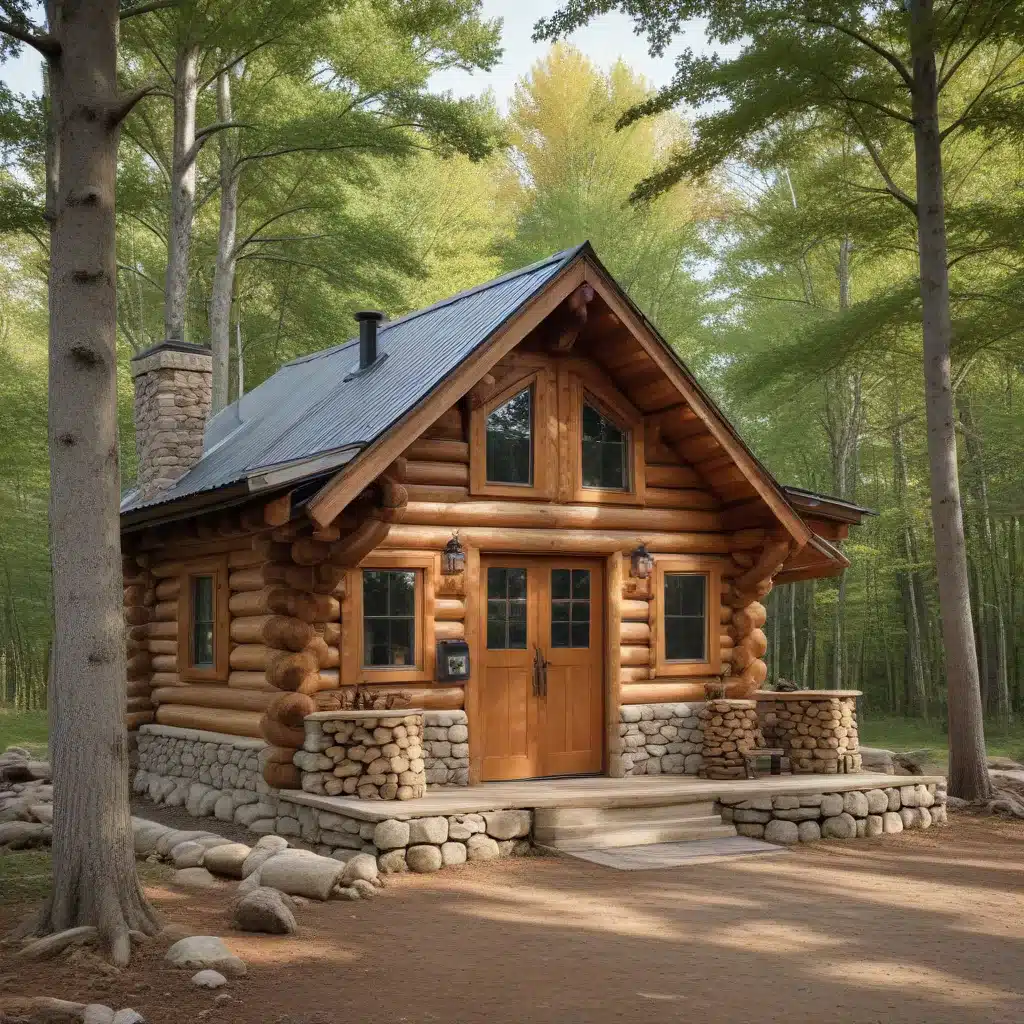
Optimizing Storage and Organization
When designing a compact log cabin, maximizing storage and organization is crucial. The limited square footage requires innovative solutions to accommodate all your necessities without sacrificing the open, airy feel that log homes are known for.
One effective approach is to utilize vertical space through the installation of custom shelving units and wall-mounted cabinets. These not only provide ample storage but also create the illusion of a more spacious interior by drawing the eye upward. Carefully selecting multi-functional furniture, such as ottomans with built-in storage or beds with integrated drawers, can further optimize the available floor plan.
Another strategy is to prioritize decluttering and minimalism. Before the construction process begins, take the time to thoroughly evaluate your belongings and discard or donate any items you no longer need. This will make it easier to organize the remaining items and maximize the efficiency of your storage solutions.
Sustainable and Energy-Efficient Log Home Construction
Constructing a log cabin with sustainability and energy efficiency in mind is not only environmentally responsible but can also lead to long-term cost savings for homeowners. When it comes to log home building, there are several eco-friendly materials and techniques to consider.
Sustainable Log Selection: Look for log suppliers that source their timber from responsibly managed forests. The use of locally harvested, treated logs can significantly reduce the environmental impact of transportation. Additionally, opt for logs that have been processed using energy-efficient methods, such as air-drying or low-emission kiln drying.
High-Performance Insulation: Proper insulation is crucial for maintaining a comfortable and energy-efficient log home. Consider using spray foam, rigid foam, or advanced cellulose insulation systems to maximize the thermal resistance of your cabin’s walls, roof, and foundation. These materials can help reduce heating and cooling costs while minimizing the home’s carbon footprint.
Energy-Efficient Windows and Doors: Select windows and doors with high-performance glazing and frames that are designed to minimize heat transfer. This can include features like low-emissivity coatings, argon gas fills, and thermally broken frames. These upgrades can significantly improve the overall energy efficiency of your log cabin.
Renewable Energy Integration: Explore the possibility of incorporating renewable energy systems, such as solar panels or a geothermal heat pump, into your log home design. These technologies can help offset your energy consumption and further reduce your environmental impact.
Craftsmanship and Attention to Detail
The beauty and longevity of a log cabin are largely dependent on the quality of craftsmanship and attention to detail during the building process. Skilled log home builders, often referred to as “log home artisans,” play a crucial role in ensuring the structural integrity, aesthetic appeal, and long-term durability of the finished product.
Precision Log Fitting: The precision with which the logs are fitted and joined is a hallmark of high-quality log home construction. Experienced builders utilize advanced techniques, such as dovetail or saddle-notch joinery, to create tight, weatherproof seals between the logs. This attention to detail helps maintain the structural integrity of the cabin and minimizes the risk of air leaks or moisture intrusion.
Careful Log Selection and Preparation: The selection and preparation of the logs are equally important. Builders carefully inspect the raw timber for defects, ensuring that each log is straight, well-seasoned, and free of cracks or knots that could compromise the structural integrity. Proper debarking, cutting, and finishing processes are essential for creating a visually appealing and durable log home.
Innovative Design Elements: In addition to traditional log home construction techniques, some builders incorporate innovative design elements to enhance the functionality and aesthetic of the cabin. This may include the integration of timber-frame elements, custom-built storage solutions, or the incorporation of natural materials like stone or reclaimed wood into the interior and exterior finishes.
Estimated Costs for Log Home Construction
The cost of constructing a log cabin can vary widely depending on a variety of factors, including the size of the home, the complexity of the design, the quality of materials used, and the region in which the cabin is being built. As a general guideline, the average cost of building a log home in the United States as of September 2024 is estimated to be between $200 and $400 per square foot.
To provide a more detailed breakdown, consider the following cost ranges for various aspects of log home construction:
| Component | Cost Range (USD per sq ft) |
|---|---|
| Log Package (including logs, sealants, and fasteners) | $80 – $150 |
| Foundation and Framing | $30 – $60 |
| Insulation and Weatherproofing | $15 – $30 |
| Windows and Doors | $20 – $40 |
| Roofing and Exterior Finishes | $25 – $50 |
| Interior Finishes and Cabinetry | $30 – $70 |
It’s important to note that these cost estimates are intended to provide a general sense of the financial investment required for log home construction. Actual costs may vary significantly based on regional market conditions, the complexity of the design, and the level of customization or high-end features included in the project.
When planning your log cabin build, it’s recommended to work closely with a reputable log home builder or construction professional to obtain a detailed, site-specific cost estimate that aligns with your budget and design goals.
Conclusion
Crafting a compact, efficient, and sustainable log cabin requires a thoughtful approach to design, material selection, and construction techniques. By maximizing storage solutions, incorporating eco-friendly materials, and ensuring meticulous craftsmanship, homeowners can create a log home that not only meets their functional needs but also reflects their commitment to environmental responsibility and long-term durability.
To further explore the possibilities of log home construction, we encourage you to visit Jorgensen Log Homes, a leading provider of custom-built log cabins and timber frame homes in the United States. Their experienced team of log home artisans can guide you through the entire process, from design to completion, to help bring your vision for a compact yet captivating log cabin to life.


